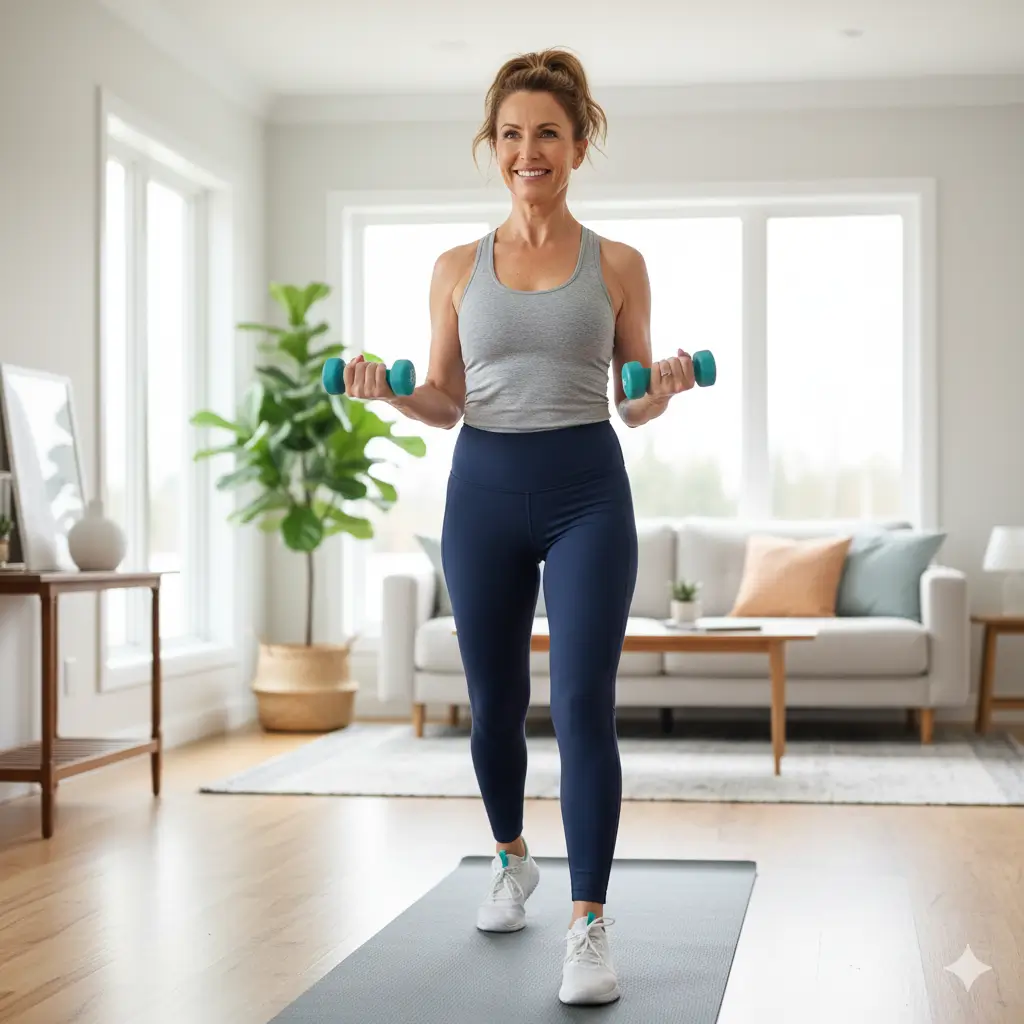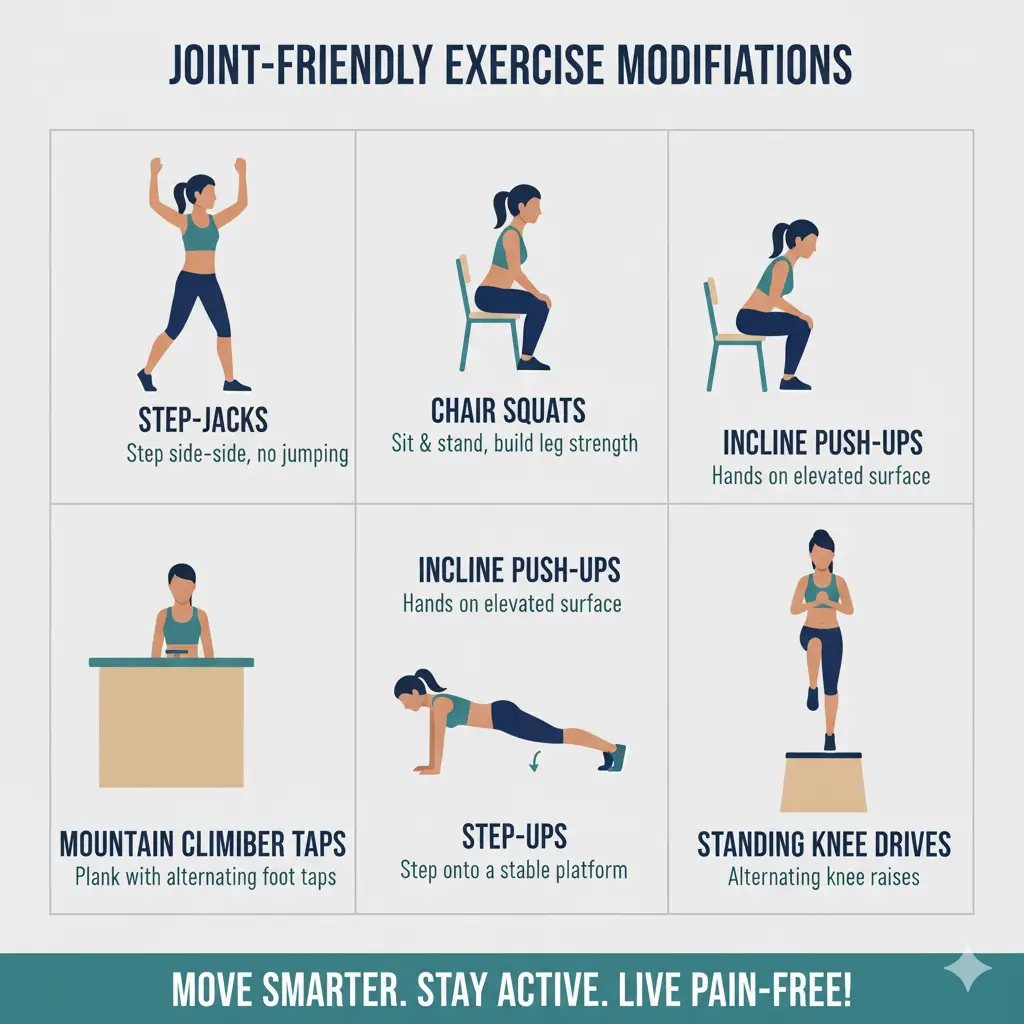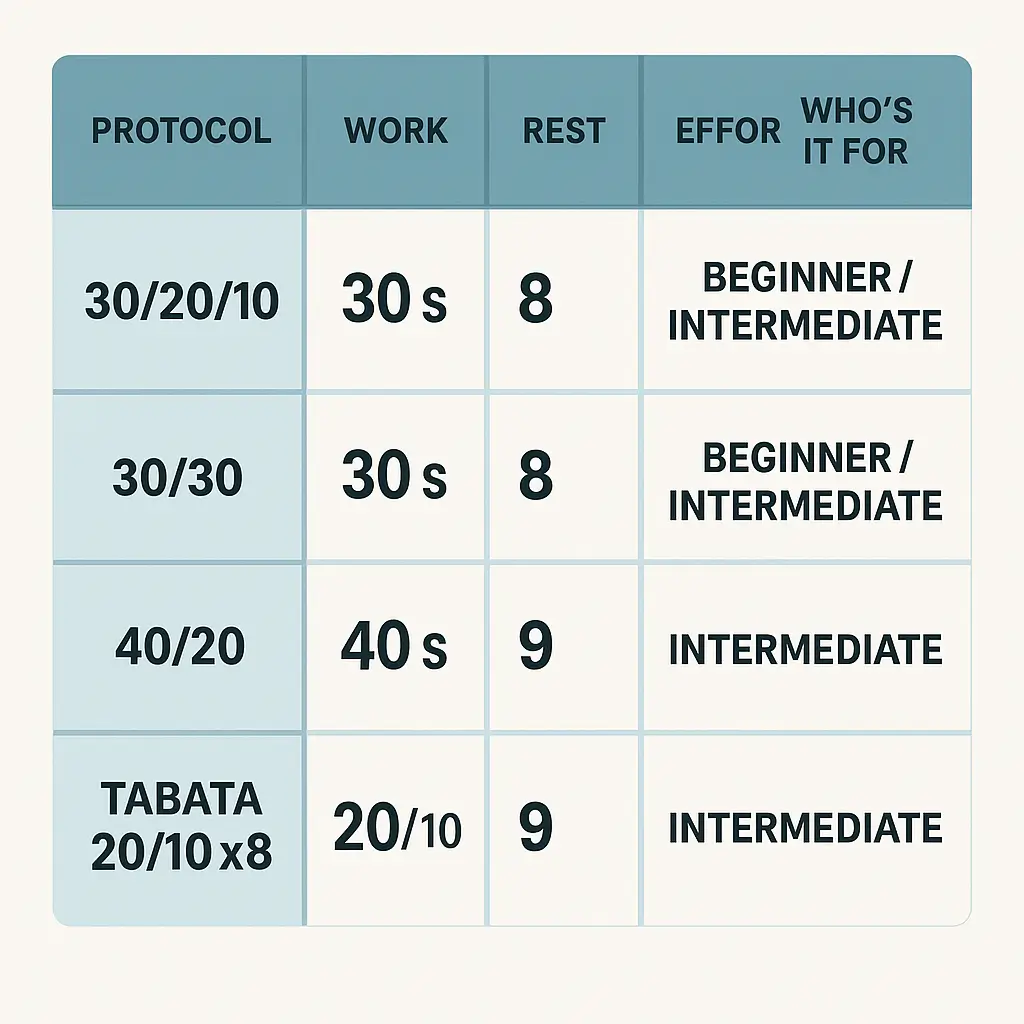
HIIT workouts for women over 40 can be a game changer—but only if they’re done the right way. At this stage, your body recovers differently, joints need more care, and hormones can influence how you feel after a workout. The goal isn’t to “go harder”; it’s to train smarter—so you burn fat, build strength, and still wake up energized the next day.
Maybe you’ve tried long cardio sessions with little change. Maybe you’re returning to fitness and wondering if high-intensity exercise is too much now. You’re not alone—and you don’t need to guess.
Important note: Always consult a health professional before starting high intensity interval training, especially if you have joint pain, cardiovascular risk, or have recently gone through menopause. Safety first.
In this guide, you’ll get:
- Clear answers on whether high intensity interval training is right for you now.
- Joint-friendly routines and progressions for all fitness levels.
- Exact intervals, work:rest ratios, and weekly schedules.
- Recovery, nutrition, and sleep strategies that support hormones.
- A 4-week exercise routine that you can start today (and adapt next month).
Is HIIT Right for Women Over 40?
What is HIIT (in one minute)?
High Intensity Interval Training (HIIT) alternates short bursts of effort—called intense intervals—with periods of rest. Example: 30 seconds brisk work, 30 seconds easy pace; repeat for 20–30 minutes. You can use bodyweight moves like jumping jacks, light weights training, or cardio equipment.
Is HIIT safe after 40?
Yes—if you match the intensity to your current fitness level and protect your joints. “High-intensity” is relative: your 7/10 effort might be someone else’s 9/10. You can do entire sessions low-impact and still get health benefits.
How hormonal changes affect fat burning
During perimenopause and menopause, estrogen drops, shifting fat storage toward the belly. Intensity interval training HIIT helps by:
- Burning calories more efficiently
- Preserving lean muscle and supporting the building of muscle
- Boosting insulin sensitivity
HIIT vs. walking vs. steady cardio
- Walking/Zone 2: recovery, daily movement
- Steady cardio: endurance and heart health
- HIIT: an effective workout for fat loss and cardio fitness in less time
Helpful scale: Use RPE 1–10 (Rate of Perceived Exertion). Aim RPE 7–8 in the work intervals, RPE 3–4 in recovery.
Benefits of HIIT for Midlife Women
Research from the American College of Sports Medicine (ACSM) and the Journal of Strength and Conditioning Research shows that HIIT offers:
- Burning calories efficiently and supporting fat loss
- Saves time—30 minutes of HIIT can equal longer cardio
- Preserves lean muscle, slowing age-related decline
- Improves heart health, blood pressure, and blood sugar
- Supports fitness goals by combining cardio and strength
- Boosts mood and energy through hormonal balance
Common Concerns & Misconceptions

“Will HIIT spike cortisol and cause belly fat?”
Too much can, but 2–3 sessions a week of short workouts support fat loss instead of blocking it. Remember: no exercise can directly target belly fat. HIIT helps by improving overall metabolism and insulin sensitivity.
“My knees/hips can’t handle jumping.”
Do low-impact alternatives. Replace jumping jacks with step jacks, mountain climbers with standing marches, and try cycling, rowing, or brisk walking intervals. These are valid and effective workouts.
“Is walking better?”
Walking is great for recovery. HIIT is the fat-burning spice that makes a full body workout plan more effective. Both complement each other.
Pelvic floor & joint safety
If you’re new, stick to controlled movements—chair squats, incline push-ups, step-ups. Gradually increase intensity as fitness levels improve.
How to Structure HIIT Workouts for Women Over 40

Warm-up (5 minutes): marching, shoulder rolls, step jacks, light squats
Workout Formats:
- 30/20/10: builds up intensity safely
- 30/30: balanced for beginners
- 40/20: pushes challenge for fat loss
- Tabata (20/10 × 8): very short but high intensity
Beginner Template:
- 20 sec work / 40 sec rest
- Moves: squats, wall push-ups, step jacks, knee drives
Intermediate Template:
- 30/30 × 4 rounds
- Add weights training or bands
Advanced Template:
- 40/20 × 4–5 rounds
- Combine cardio and resistance for full body workouts
Always include periods of rest and a 3–5 minute cooldown.
Expert advice on HIIT during menopause
Best HIIT Workout Routines for Women Over 40
20-Minute Beginner Routine (Low-Impact)
- Squats, wall push-ups, step-back lunges, standing crunches
30-Minute Joint-Friendly Routine
- Add resistance bands and light dumbbells
- Focus on controlled reps to burn fat and build muscle
40-Minute Full Body Routine
- Thrusters, bent-over rows, lunges, glute bridges, mountain climber taps
- Combines weights training with cardio for an effective workout
How Often Should You Do HIIT After 40?
Research favors HIIT 2–3 times a week for most women, with 48 hours between sessions. Programs lasting 8+ weeks tend to yield better long-term fat loss and fitness gains compared to short bursts.
- Start: 2 times a week
- Build: up to 3–4 times a week if recovery is good
- Rest: At least 48 hours between sessions to protect hormones, joints, and nervous system
Recovery must-haves: 7–8 hours sleep, protein-rich meals, hydration, and active recovery like yoga or walking.
Integrating HIIT with Strength & Nutrition
- Alternate HIIT and strenght training days for best results
- Eat a small carb before (banana, oats) and protein after (shake, eggs)
- Aim for protein at every meal to support building muscle and fat loss
Nutrients that help recovery: magnesium, omega-3s, vitamin D, and whole foods rich in protein and fiber.
How HIIT Fits with Other Types of Exercises and Lifestyle Factors
HIIT is powerful, but it isn’t the only way for women over 40 to stay healthy. A complete exercise routine should balance high intensity interval training with other types of exercises that support overall health and body composition.
- Aerobic exercises like brisk walking, cycling, or swimming improve cardiovascular exercise capacity and can be done more frequently. For most older adults, these lighter cardio exercises are safe to perform several times a week alongside HIIT.
- Cardio workouts (steady-state sessions) help train endurance and give your joints a break from intense intervals. These lower-intensity cardio exercises also promote recovery between HIIT days.
- Strength or weights training builds lean muscle, which boosts calorie burning even at rest. This is key for women over 40 who want to improve body composition rather than just focus on the scale.
- Tracking maximum heart rate is helpful to gauge intensity. A common formula for older adults is 206 – (0.88 × age). HIIT intervals should be 75–90% of this, while aerobic sessions sit closer to 60–70%.
- Diet and exercise go hand in hand. Without protein, whole foods, and adequate sleep, even the best workout plan won’t deliver sustainable fat loss. Pair HIIT and cardio workouts with balanced meals to maximize calorie burning and recovery.
The ideal balance for women over 40?
- HIIT: 2–3 times a week
- Aerobic or steady cardio exercises: 2–3 times a week
- Strength training: 2 times a week
- Rest or mobility work: at least 1 day a week
This mix not only helps with losing weight but also supports cardiovascular health, muscle strength, and long-term energy.
Results You Can Expect
- Week 1–2: more energy and better sleep
- Week 3–4: improved endurance and posture
- Week 6+: visible fat loss, losing weight, improved tone and strength
Remember: HIIT doesn’t directly shrink belly fat, but it supports overall fat loss and healthier fat distribution.
FAQs – HIIT Workouts for Women Over 40
No. Most women over 40 benefit from 2–3 HIIT sessions per week, with at least 48 hours of rest between sessions. Daily high intensity exercise can raise cortisol, increase injury risk, and slow recovery. Instead, mix HIIT with walking, aerobic exercises, and strength training for a balanced routine.
The 30-20-10 method is a beginner-friendly intensity interval training format. You perform 30 seconds at a moderate pace, 20 seconds at a harder pace, and 10 seconds at near-maximum effort, followed by rest. This helps women over 40 build fitness safely while still burning calories effectively.
Yes—if you choose joint-friendly, low-impact HIIT workouts for women over 40. Replace jumping jacks with step jacks, do chair squats instead of jump squats, and opt for cycling or rowing instead of running. These types of exercises reduce stress on joints while still delivering cardiovascular benefits.
Energy and sleep often improve within 2 weeks. Visible fat loss and better body composition usually appear within 4–8 weeks when HIIT is combined with diet and exercise, especially strength training and adequate protein intake. Long-term results are best when workouts are maintained consistently over several months.
Absolutely. Effective workout routines for women over 40 can be built with just bodyweight: squats, step jacks, incline push-ups, standing knee drives, and glute bridges. Resistance bands or light dumbbells can be added later for progression and muscle building.
Before: a light carb (like oats, banana, or whole grain toast) 30–60 minutes prior. After: 20–30 grams of protein (eggs, Greek yogurt, or a protein shake) within 1–2 hours. Adequate hydration is essential, as recovery depends on both diet and exercise balance.
No exercise can spot-reduce belly fat. However, HIIT workouts for women over 40 help burn fat overall, improve insulin sensitivity, and preserve lean muscle. Combined with strength training, proper nutrition, and consistent rest, HIIT supports a healthier body composition and long-term fat loss.
Final Tips to Make HIIT Work for You
- Adjust intensity to your fitness level and daily energy.
- Prioritize form over speed—quality reps prevent injury.
- Stick to 20–30 minutes per session for sustainable results.
- Focus on recovery: sleep, protein, and periods of rest.
- Progress gradually; if new, start with low-impact alternatives.
Ready to begin? Download our 4-Week HIIT for Women Over 40 Plan (PDF) with full body workouts, rest guidance, and a clear path to your fitness goals.